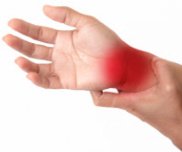What Makes An Effective Stretch?
Stretches are the cornerstone to an effective program to relieve the symptoms of any repetitive strain injury. Knowing how to do stretches in the best possible way is critical in gaining the most benefit from those stretches, and avoiding any possible re-injury.
When you stretch, you are asking your body to make a change. Ideally, you are asking your body to lengthen a muscle beyond its current range of motion, or to release an adhesion that may have developed in the connective tissue matrix of the body.
Injured Tissue Is Special
The thing you must remember when stretching to recover from any repetitive strain injury is that the tissue is injured. It cannot and will not respond normally to the stretches that most of us do everyday. For repetitive strain injury, it is necessary to craft a whole new way to stretch, one that respects the limits of damaged tissue and works to provide a measure of safety from over-stretching (which could lead to further injury).
Listen, Feel, Pay Attention
For repetitive strain injury stretches, it is critical that you remain in touch with your body as you stretch. If you take the time to feel what is happening under your skin, to feel the sensation of stretching and analyze how it feels and what it's doing, then your chances for spectacular results from that stretch increase significantly.
Once you are actively paying attention to the sensations of your stretch, it is now important to learn how to control those sensations. You do this by increasing or decreasing the intensity of the stretch. How is this accomplished? It's simple, really. Just press harder into the stretch (by tiny bits, please!) to increase the intensity and back off from the stretch (again, by tiny bits so you don't lose the stretch entirely) to decrease its intensity.
Your Injury in Layers?
The interesting thing about repetitive strain injuries is that they often develop in layers in the body. Some of the injured tissue is very superficial, and some of it is very deep in the muscle. Depending on where the damage occurs, the sensations you feel from a stretch will differ.
Superficial injury will generally feel stronger in sensation and deeper restrictions or adhesions will feel less distinct. Paying attention to the sensations of a stretch means paying attention to all the layers of feedback you are getting from your body.
Control The "Volume" Of Your Stretch
When you start a stretch, tune into your body's sensations and feel what the stretch feels like. Notice where you feel the pull. Is it changing? If it is intensifying, then back off on the intensity slightly. You don't want to back off to the point of losing the stretch entirely, so you will have to practice how to back off just enough to still feel some of the stretching sensation.
If you start a stretch and find the sensation disappears quickly, wait about ten seconds to see if the stretch sensation reappears, possibly in a new location or in a new depth of tissue. If you end the stretch too soon, you may miss the opportunity to release additional, deeper tissue that can also have an effect on your injury and its symptoms.
Once you have identified the stretch sensation, hold this position for about ten seconds, then release the stretch entirely. As your body heals, you can begin to hold the stretch for longer periods. Just make sure that you remain in constant contact with how the stretch is feeling so that you never allow the sensation to stray into a painful sensation.
Rest Is The Finishing Touch
It is always wise to add a rest period after practicing a stretch for repetitive strain injury. This allows the body time to complete the lengthening process that you have asked of it. It also allows the tissue time to relax and recoup, helping to prevent any adverse reaction to the stretch, or even to possible over-stretching.
When practicing the rest phase of a stretch, remain tuned in to the sensations that remain from the stretch. You want to rest by placing your hands in your lap, in a pocket, or on your belly (if you are laying down) until all those remaining sensations are completely gone.
In the beginning stages of recovery, when the rest period is essential to safe stretching, you will find the rest periods will need to be a bit longer. I feel this is because your body is dealing with so much adhesion and restriction, each stretch has maximum effect on the injured tissues, and those tissues require additional TLC afterwards.
As you continue to safely practice your stretches, you will find that the rest period shortens significantly, indicating that your body has released many of the restrictions and adhesions you once had.
Respecting Limits Will Give You The Fastest Results
Consciously respecting the limits of an injured body will go a long way to help you recover quickly, effectively and with the least amount of repercussions from over-stretching.
Injured tissue is like having a sprained ankle. If you had this kind of injury, my guess is that you would never think it's okay to jump rope when your ankle was hurting this much. But this is exactly what happens when you approach stretching with the same kind of energy that you would for normal, uninjured tissue.
Injured tissue requires a much more gentle approach. That is why I mean when I suggest that you respect the limits of your damaged tissue. Slow and steady wins this race!
Here Is More Information About Effective Stretching
In the course of experimenting with stretching for repetitive strain injuries, I discovered some pretty amazing new techniques. I call it the Butler Method of Rapid Fascia Release. Click here for more information. It could make a real difference in getting rid of your symptoms.
Happy Stretching!
Click the block below that most closely matches your injury for more information and to find the Toolkit we offer to help you in your recovery.







